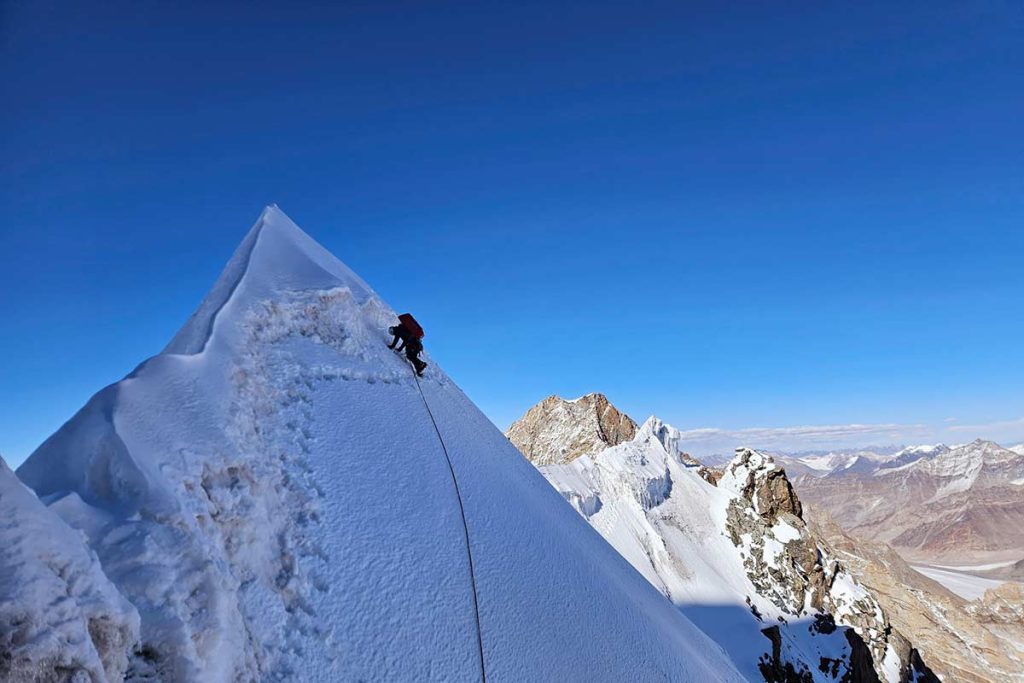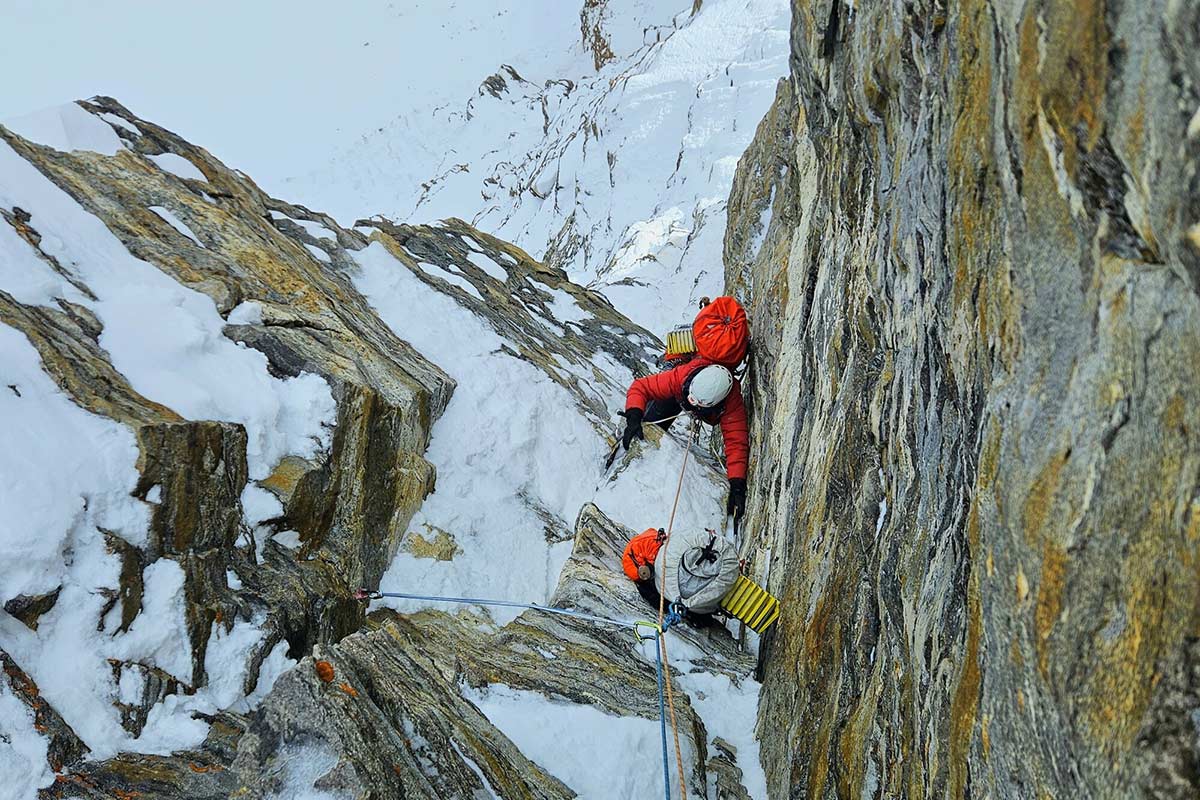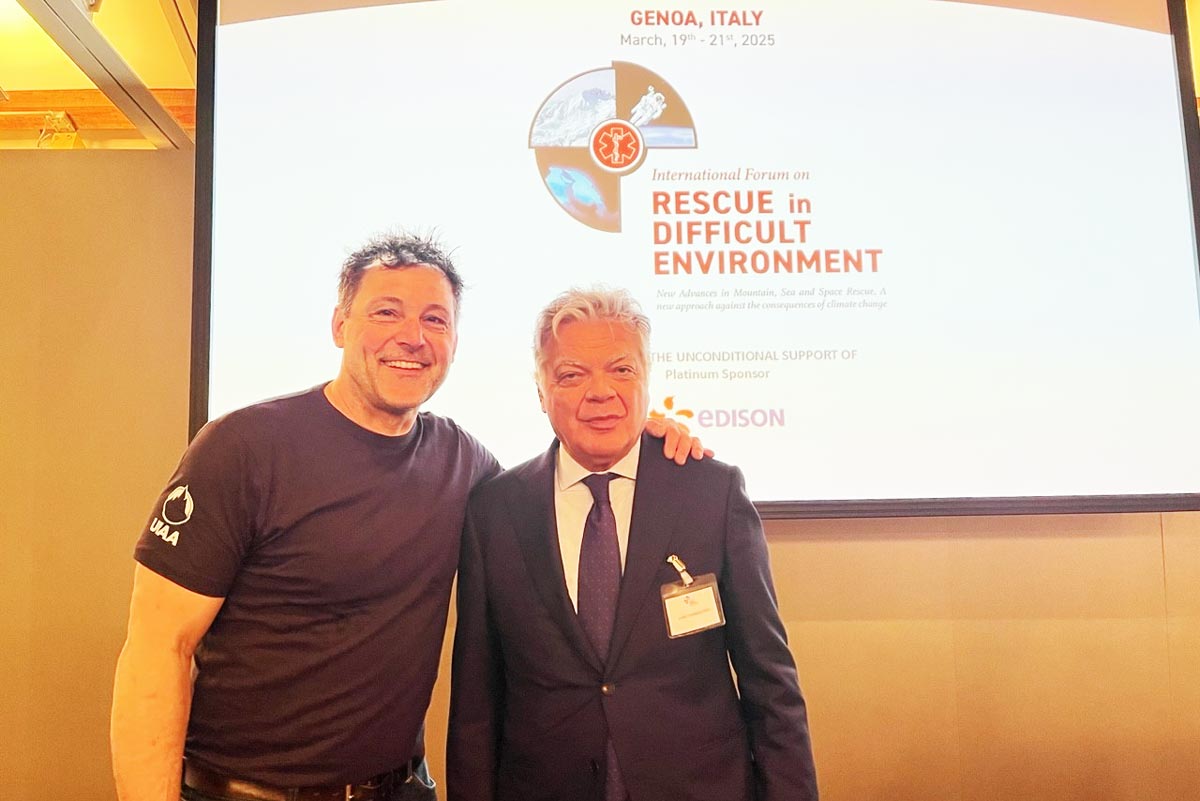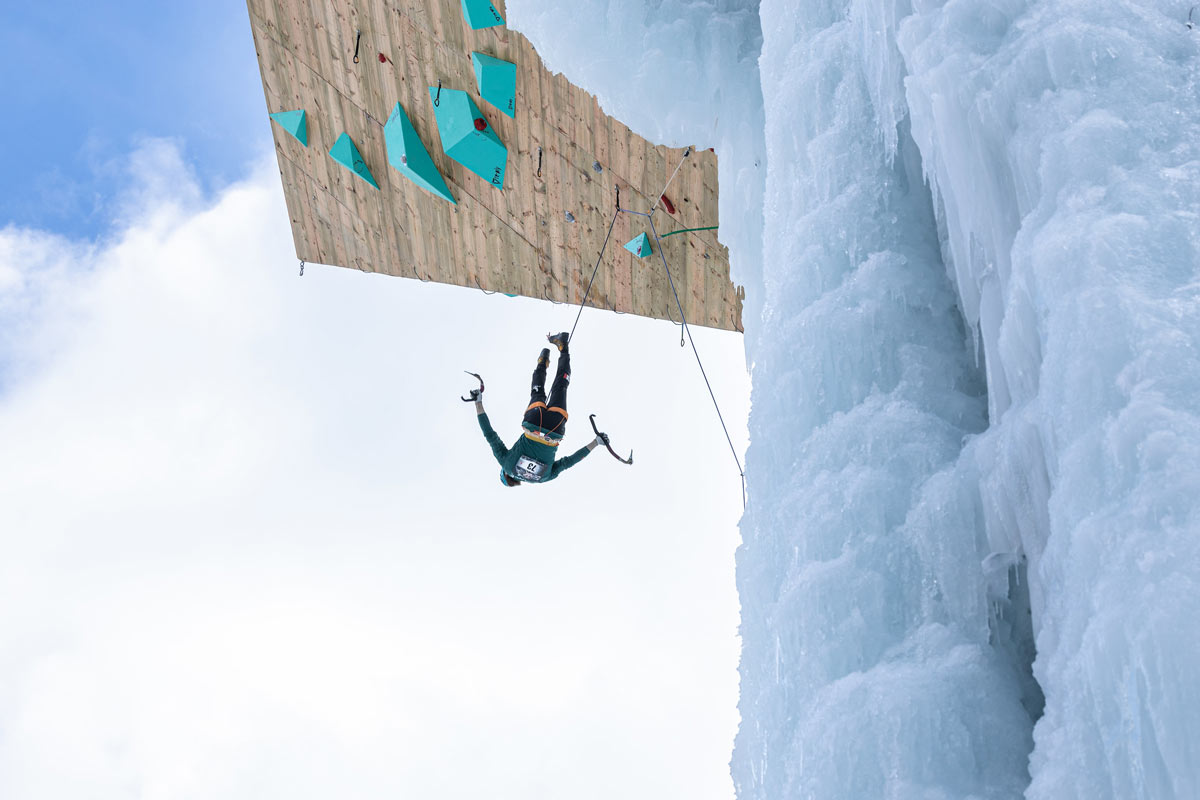The following report is courtesy of the Alpine Association of Slovenia (PZS), a member of the UIAA since 1991.
This is the latest in a series of articles promoting the participation of women in mountaineering to coincide with the UIAA recently signing the Brighton Plus Helsinki Declaration.
—
Slovenian alpinists Anja Petek, Patricija Verdev, Ana Baumgartner, and Urša Kešar, members of the 2024 Lalung Women’s Expedition, opened four new routes in the remote mountains above the Lalung Valley in the Indian Himalayas. The longest and most complex new line of their expedition is the 2000-meter route Here comes the sun (ED, M6+, AI5+, 5 climbing days), which follows the eastern ridge of the previously unclimbed six-thousand-meter peak Lalung I (6,243m). Here is their story:
Before the expedition, online search results indicated that our objective, the Lalung Valley, was still mostly unexplored. Our sense of its remoteness became even clearer at the Indian Mountaineering Foundation (IMF) in Delhi, where we were the ones telling the staff about the existence of certain peaks in the Lalung Valley. The reality of what this meant for us as climbers became more tangible with each passing day we spent in the valley.
We set off on August 26 together with eighteen local porters from the Pensi La Pass, the entrance to the valley, and quickly realized that even they could not provide much information. Initially, they had told us that our base camp would be at 5,000 meters, but we soon realized that was just a quick answer without any real merit. After just three hours of walking, we found an excellent spot for base camp with clean, running water at 4100 meters. Of course we went to check for other locations higher up, but we found only dirty water and unsuitable terrain.

Having the base camp at this location meant we’d have to add an extra day or two to the approaches to Lalung I and the neighboring peaks.
Once our base was set up, our chef Lobzang, his assistant Thuksaj, their “boss” and resident entertainer Lobzang, and officer Freni stayed with us. We developed a very friendly bond with Freni during our stay. But little did we know that our base camp was also home to bears.
The day after our arrival we explored the valley with our officer. Despite unstable weather, we managed to cover 20km of moraine and glacial terrain, which took us an entire day. Cloudy weather prevented us from getting a good look at the faces of the mountains at the far end of the valley, which were our primary objective.
After a day of rest, we continued with our acclimatization, making the most of the patchy good weather. Each team slept at an altitude of least 5,000 meters. Before we moved up to the advanced base camp (ABC) at 4,800 meters, we had our first night-time bear visit, as it sniffed around for food. After the unpleasant encounter, all four of us relocated to ABC, which was bear-free. After arriving at ABC, Lalung I made its first brief appearance, looking truly majestic and boosting the motivation of the Patricija & Anja team even further. The valley is surrounded by other peaks, some of which are still untouched and unnamed (6,274m, 6,048m, 6,197m, 6,067m). Along with Lalung I, there are also Lalung II and III, and the previously climbed Chiling I and II to the far right. We had a close look at the 6,197m peak, which Ana & Urša had been studying on photos from the 2022 expedition, but this year, the conditions weren’t very good as it had only a light dusting of snow.
Due to Urša’s altitude problems, she and Ana retreated back to base camp after two days, where they had to deal with a full-on bear saga with the cooks and officer. After more than ten unwelcome night-time visits, Patricija’s ripped tent, heaps of stolen food, and a knocked-down toilet, they managed to scare off the bears with fire and enjoyed a few peaceful nights. Meanwhile, despite no weather forecasts, Urša and Ana managed to climb two new routes on a nearby granite north face. The climbs weren’t without their challenges; on the first route, promising weather gave way to snowfall, forcing them onto an alternate exit, which eventually turned out to be quite satisfying. On their second route, they followed the planned line to the top of the face and the weather was more favorable.
After reaching ABC, Patricija and I packed our rucksacks for a multi-day adventure and after a full-day approach over a challenging glacier, we finally reached the base of the eastern ridge of Lalung I.
The forecast called for a promising weather window but on the second day on the ridge, we were forced to set up our tent in the middle of the day and huddle inside due to a snow storm, which lasted the entire third day. On the fourth day, we woke up to a sunny morning and climbed all day and late into the night, still not reaching the summit. The fifth day on the ridge required even more determination and willpower. At 1:30 am, we climbed the final mixed pitches and settled in for a rest. In a moment of tired carelessness, the wind blew away our tent poles, but by then we’d grown accustomed to bivying on the wall so sleeping in a bivy sack didn’t upset us too much. The next morning was foggy with diffuse light, making it hard to navigate the unfamiliar terrain leading to the summit of Lalung I. We finally reached the top at 9 am after climbing some easier snow slopes.
We still had the long descent down the western ridge and onto the glacier ahead of us. We descended the snowy ridge and made five rappels down the north face to reach the glacier at 6:30 pm. It took us another eight hours to arrive back at ABC. The next day, we descended to base camp and just before stepping off the moraine, the sight of three silhouettes -Ana, Urša, and Freni – brought smiles to our tired faces. Without knowing about each other’s whereabouts, we met at the perfect spot and were overwhelmed with joy.
After returning to base camp, the bear situation had calmed down, but we all agreed it was best for the animals and for us to leave as soon as possible. Our expedition ended with our departure from base camp on September 17, when we made our way to the village of Tungri. From there, it was a nerve-wracking drive on a half-finished road to Leh, where we spent the last days of the trip resting and relaxing.
Climbers:
Ana Baumgartner (AO PD Ljubljana Matica)
Urša Kešar (AO PD Kranj)
Patricija Verdev (AO PD Celje Matica)
Anja Petek (Zgornjesavinjski AK Rinka)
New routes:
31 August: 5,332m peak; Connection; VI-/V-IV, 1,400m, 15 hrs. (Patricija Verdev and Anja Petek)
10 September: 5,332m peak; BC (Bear camp); V-/IV-III, 800m, 8 hrs. (Ana Baumgartner and Urša Kešar)
13 September: 5,332m peak; Calm before the storm?; V+/IV, 670m, 6 hrs. (Ana Baumgartner and Urša Kešar)
9-14 September: Lalung I (6,243m), Here comes the sun; ED, M6+, AI5+; 2,000m (5 climbing days). (Patricija Verdev (A0) and Anja Petek)
The original article can be found here.



